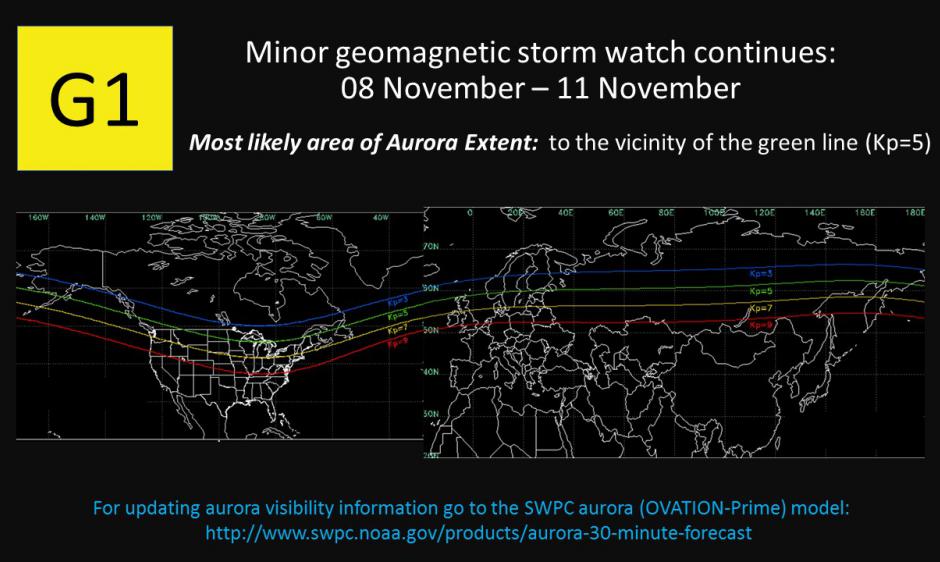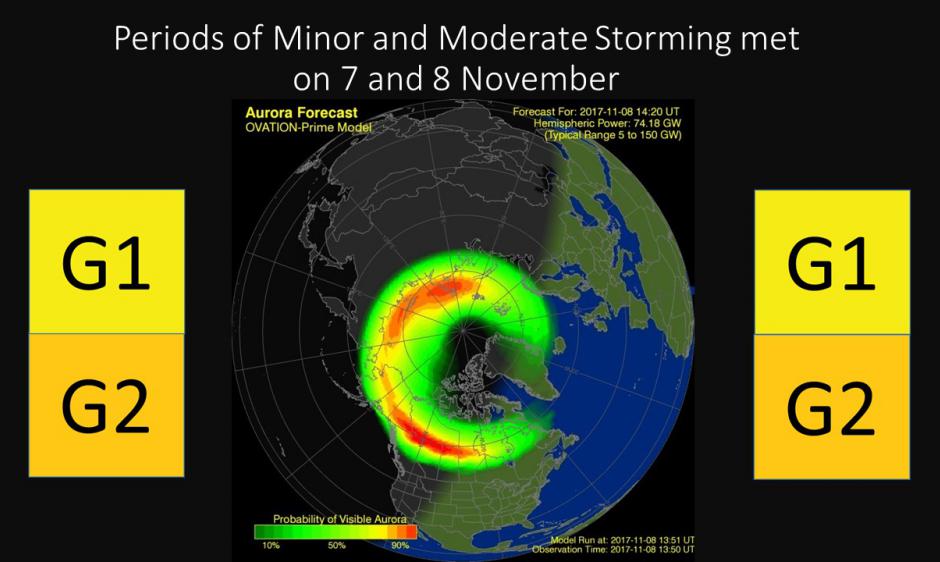
Amped-Up Auroras May Shine in Canada, Northern US Tonight!
Auroras may be visible across Canada and the northern parts of Montana, North Dakota and Michigan Nov. 8 to 11, courtesy of a low-density spot in the sun's corona.
Auroras last night (Nov. 7) were spotted in Alaska, Vermont, New York, Wyoming, Iowa, Wisconsin, Michigan, Illinois and Nebraska, according to Spaceweather.com, which regularly tracks space weather events. The glowing lights appear when charged particles from the sun — the solar wind — interact with Earth's magnetic field.

The solar wind is flowing particularly strongly since yesterday because of a hole in the sun's upper atmosphere, which is called the corona, according to the National Oceanic and Atmospheric Administration's (NOAA) Space Weather Prediction Center (SWPC). The holes are low-density regions in the sun's atmosphere that come and go over time. They appear darker than their surroundings, NASA officials have said — and these holes let particles fly out of the sun three times faster than they do in the surrounding regions of its atmosphere.
Those particles have generated minor and moderate geomagnetic storms in Earth's magnetosphere, and SWPC predicts that this will continue for the next few days.

You can track the northern lights and see if they're likely to reach your location, using SWPC's 30-minute aurora forecast tool here: http://www.swpc.noaa.gov/node/45
A collection of tweets shows some of the spectacular auroras spotted in the past day. If you're near the area indicated on NOAA's map, be sure to look outside for your own!
Email Sarah Lewin at slewin@space.com or follow her @SarahExplains. Follow us @Spacedotcom, Facebook and Google+. Original article on Space.com.
Get the Space.com Newsletter
Breaking space news, the latest updates on rocket launches, skywatching events and more!
Join our Space Forums to keep talking space on the latest missions, night sky and more! And if you have a news tip, correction or comment, let us know at: community@space.com.

Sarah Lewin started writing for Space.com in June of 2015 as a Staff Writer and became Associate Editor in 2019 . Her work has been featured by Scientific American, IEEE Spectrum, Quanta Magazine, Wired, The Scientist, Science Friday and WGBH's Inside NOVA. Sarah has an MA from NYU's Science, Health and Environmental Reporting Program and an AB in mathematics from Brown University. When not writing, reading or thinking about space, Sarah enjoys musical theatre and mathematical papercraft. She is currently Assistant News Editor at Scientific American. You can follow her on Twitter @SarahExplains.









